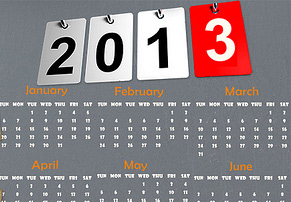 It was a great year on MeasuringUsability.com.
It was a great year on MeasuringUsability.com.
We featured both primary research and relevant research published in peer reviewed journals and websites.
Our articles were served-up 2.2. million times to 895k visitors in 2013.
Here are the ten articles that received many of those page views (in descending order).
- Using Card Sorting To Test Information Architecture: Card sorting is a popular method for improving the organization of websites and software—with around half of UX researchers using it. Here are some common questions and answers about the method including when to use it, how to interpret the output, the number of items to test and how long it takes.
- Five HCI Laws for User Experience Design : Usability is hardly physics or chemistry, but there are some interesting “laws” of human behavior that apply to designing interfaces. I’ve described five of the most common ones you should at be familiar with.
- Measuring The Visual Appeal of Websites: The aesthetic appeal of websites gains a lot of attention from a branding and sales perspective. While we generally ascribe positive attributes and increased trust in more attractive people, products and websites, some research has actually shown that users find more usable websites more attractive (as opposed to more attractive websites being found more usable).
- Seven Tips for Writing Usability Task Scenarios : At the heart of any usability test is the task scenario. It takes practice and pragmatism to craft a scenario that provides enough information for the user to complete a task without leading them too much.
- Seven Ways to Test the Effectiveness of Icons: Icons are ubiquitous. For as long as we’ve had graphical user interfaces we’ve had debates on what makes a good icon. Don’t just rely on intuition or the vice president’s opinion, use some systematic approaches at understating which icon does its job better.
- Rating the Severity of Usability Problems : A usability test usually reveals more problems than development teams can address. There have been many different scales proposed for problem severity, in general each method has a similar structure: a set of ordered categories reflecting the impact the problem has on the user, from minor to major. One important thing to do is separate problem frequency from severity.
- Best Practices for Using Statistics on Small Sample Sizes: Ah sample size, everyone’s favorite topic to misuse and abuse. It’s a common misconception that you can’t use statistics with small sample sizes (less than 30 or so). You can, you just need to make some adjustments and deal with inevitable limitations.
- A Brief History of Usability: The profession of usability as we know it largely started in the 1980s. Many methods have their roots in the earlier fields of Ergonomics and Human Factors which began near the beginning of the 20th century and had a strong influence through the WWII. While not exhaustive, the following is a timeline of several key events, people and publications that have shaped the history and future of usability. This timeline was so popular we made an awesome four foot long infographic to display in your living room.
- 15 Mobile UX Facts and Insights : From usage and ownership to purchasing behavior, we collected 15 data points to help in crafting a better mobile experience. Some additional points on mobile behavior can be found from an interesting longitudinal study of iPhone usage.
- What UX Methods to Use and When to Use Them : We described over twenty of the more popular methods we use and when we use them in the product development cycle. With over 30,000 views, this post was so popular we turned it into an infographic to hang on your wall.


